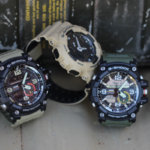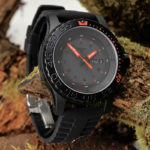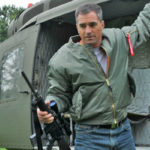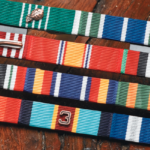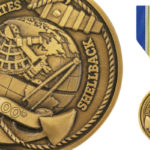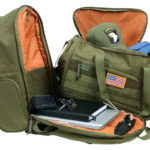A Brief History of the U.S. Air Force
Air Force Day is celebrated August 1st and is a day to recognize the aerial superiority, ingenuity, and advancements of the U.S. Air Force. Air Force Day began after WWII, where mechanized vehicles and weapons such as tanks and airplanes became readily available and provided key tactical advantages to Allied and Axis forces.
At the start of the First World War, the Army Air Corps served as the “aerial warfare service” within the U.S. Army. The U.S. Army Air Corps was disbanded in 1947 and the faction then became the U.S. Air Force.
Airmen and veterans alike celebrate the Air Force’s Birthday on September 18, marking the official founding of the USAF.
4 Influential Air Force Veterans
Buzz Aldrin: Astronaut
Buzz Aldrin, the second man to walk on the Moon, also has an extensive career in the U.S. Air Force. Aldrin joined the newly created U.S. Air Force in 1947 and furthered his studies to earn a doctorate degree through the Air Force Institute of Technology.
Aldrin was commissioned as a Second Lieutenant and moved to Nellis Air Force Base in Las Vegas. He learned to fly F-80 and F-86 fighter planes and when he was deployed to South Korea during the Korean War he flew 66 combat missions in F-86 Sabres. Aldrin was assigned to the 16th Fighter-Interceptor Squadron, part of the 51st Fighter-Interceptor Wing.
Throughout his Air Force Career Aldrin was awarded two Distinguished Flying Cross medals and three Air Medals and two Air Force Distinguished Service medals. His Distinguished Flying Cross and Air Medals were awarded for his service in Korea shooting down MiG-15 aircraft under life threatening situations.
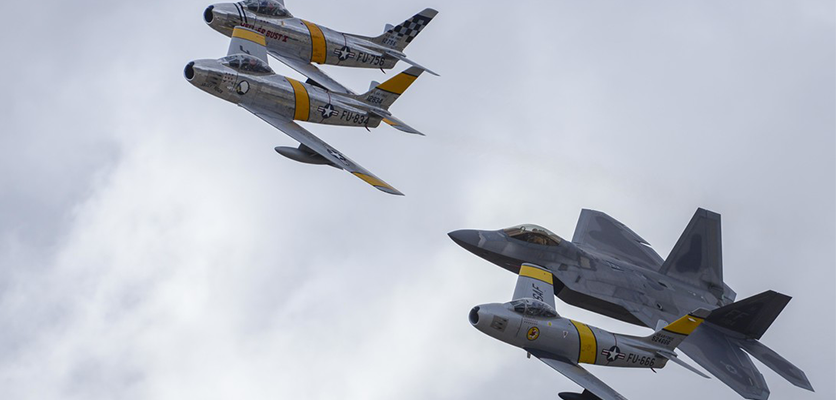
Dr. Seuss: Author and Illustrator
Theodore Geisel, or more commonly known as Dr. Seuss, served in the U.S. Army Air Forces during WWII. Before enlisted military service Seuss drew posters for the U.S. Treasury Department and the War Production Board. Although he did not see combat, Seuss made monumental contributions to the war effort stateside and internationally.
Seuss entered the Army as a Captain and oversaw the First Motion Picture Unit, a unique unit assembled during WWII for informative and entertaining video productions. While serving with the First Motion Picture Unit, or FMPU, Seuss created propaganda films and post-war films such as Our Job in Japan, and Private Snafu.
During his service in the Army, Seuss was awarded the Legion of Merit.
Eileen Collins: Astronaut
Eileen Collins, a retired NASA astronaut, first female pilot, and first female commander of a Space Shuttle. After graduating from Syracuse, she was chosen for the Undergraduate Pilot Training at Vance AFB, Oklahoma and earned her pilot wings and became a T-38 Talon instructor pilot.
Her Air Force career consists of teaching across the U.S. at various Air Force Bases. Collins was transferred to the C-141 Starlifter at Travis AFB in California, then moved to the Air Force Academy in Colorado. During her time in California she was an assistant professor of mathematics and a T-41 instructor pilot. Collins was selected for the astronaut program in 1990.
During her USAF service and career as an astronaut Collins was awarded numerous awards including: Defense Superior Service Medal, Legion of Merit, Distinguished Flying Cross, Air Force Longevity Service Ribbon, NASA Outstanding Leadership Medal, and NASA Space Flight Medal. Collins also earned the Air Force Master Astronaut badge.
Chesley Sullenberger: Pilot
At 18 Chesley Sullenberger joined the Air Force Academy, graduating in 1973, earning “Top Flyer” of his class, graduated with a Bachelor of Science, and was a commissioned officer in the Air Force.
Sullenberger trained to fly the T-37 Tweet and T-3 Talon during his time at Columbus AFB in Mississippi. In 1975, at 24, he earned his pilot wings and completed replacement training in the F-4 Phantom II. Sullenberger was assigned to the 493rd Tactical Fighter Squadron of 48th Tactical Fighter Wing at RAF Lakenheath, UK. There, he flew as a fighter pilot in the F-4D Phantom II. He continued to excel and later became a Captain.

